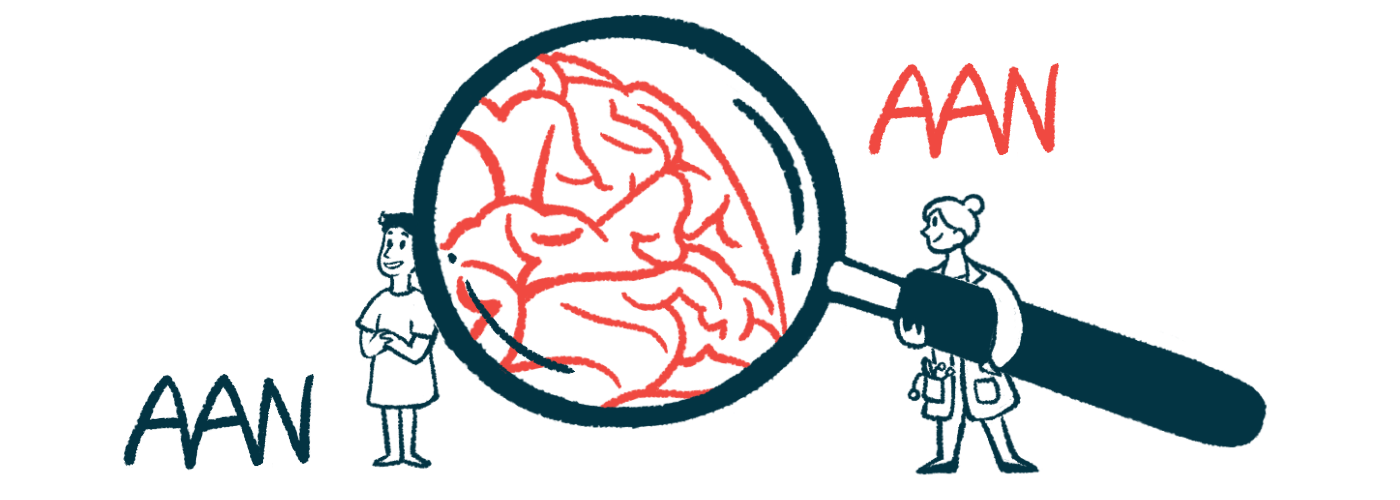AAN 2023: Amvuttra and Onpattro show similar efficacy in Phase 3 trial
HELIOS-A data show comparable and sustained drops in transthyretin blood levels

Amvuttra (vutrisiran) and Onpattro (patisiran) showed similar safety and efficacy for familial amyloid polyneuropathy (FAP) patients, according to new analyses from the Phase 3 HELIOS-A trial that supported Amvuttra’s regulatory approval.
Both therapies led to similar reductions in transthyretin, the protein that accumulates in FAP, and they were associated with comparable clinical stability or improvements over a period of 18 months, or about 1.5 years.
“These results further support [Amvuttra] as a treatment option for [FAP], providing patients and physicians an additional therapeutic option, which offers every-three-month dosing by [under-the-skin injections],” Michael Polydefkis, a neurologist at Johns Hopkins University School of Medicine in Maryland, said in an oral presentation at the 75th American Academy of Neurology (AAN) annual meeting, held April 22-27 in Boston and virtually.
Polydefkis’ presentation was titled “Comparison of Efficacy Outcomes with Vutrisiran vs. Patisiran in hATTR Amyloidosis with Polyneuropathy: Post-hoc Analysis of the HELIOS-A Study.”
Both treatments target production of the toxic transthyretin protein
Also known as hereditary transthyretin amyloidosis (hATTR) with polyneuropathy, FAP is caused by mutations in the TTR gene, leading to the production of a faulty transthyretin protein that forms toxic clumps in tissues and organs.
The nerves are particularly affected, causing symptoms of neuropathy, or nerve damage.
Onpattro and Amvuttra, both developed by Alnylam Pharmaceuticals, aim to reduce the buildup of transthyretin clumps via a process called RNA interference (RNAi). Essentially, they work by blocking an intermediate molecule derived from the TTR gene that guides protein production, thereby lowering production of the problematic transthyretin protein.
Onpattro, approved to treat FAP in 2018, is an RNAi therapy administered via into-the-vein infusions once every three weeks. Onpattro’s successor, Amvuttra, was designed to be longer lasting, allowing under-the-skin delivery once every three months.
Data from the Phase 3 HELIOS-A clinical trial (NCT03759379) formed the basis of Amvuttra’s approvals in the U.S. and in Europe last year. The study compared the effectiveness of Amvuttra (25 mg injection every three months) to an external placebo group from the Phase 3 APOLLO trial (NCT01960348), which supported Onpattro’s approvals.
A total of 122 FAP patients, ages 18 to 85, were given the experimental treatment for 18 months, and their outcomes were compared with those of 77 patients in APOLLO’s placebo group.
Previously reported results indicated that the trial met its main and secondary goals, with Amvuttra being superior to an external placebo at stabilizing or improving several clinical and laboratory measures in treated patients at nine months.
People given Amvuttra generally saw an easing in neuropathy symptoms and disability, and improvements in walking speed, life quality, nutritional status, and heart health. These benefits were sustained for the full 1.5-year trial.
In turn, patients in the external placebo group typically experienced clinical declines and “a dramatic worsening” in neuropathy symptoms over time, Polydefkis said.
HELIOS-A also enrolled 42 patients assigned to treatment with Onpattro (0.3 mg/kg infusion every three weeks), serving as a reference group. While the trial was not designed to directly compare Amvuttra and Onpattro, it noted changes in transthyretin levels among its two patient groups.
Now, researchers conducted a post hoc analysis of HELIOS-A data to compare the relative effectiveness of Amvuttra and Onpattro. A post hoc analysis is one designed and carried out after the study has finished.
Clinical characteristics, including age, sex, and disease severity were generally comparable between the two treatment groups.
Results showed that Amvuttra and Onpattro led to rapid and comparable reductions in blood transthyretin levels at three weeks, which were sustained over 1.5 years.
Minimal declines in scores on the Modified Neurologic Impairment Score +7 were observed in both groups throughout the trial, reflecting comparably stable neuropathy symptoms.
Stability or moderate improvements in life quality, walking speed, body weight, as well as reductions in disability measures also were observed in the two treatment groups, with no significant difference between the two treatments.
Each therapy also was associated with a stabilization in the levels of NT-proBNP, a marker of heart stress.
“Both treatments demonstrated acceptable safety profiles,” Polydefkis said, with most side effects being mild or moderate in severity, and no reports of medication-related trial discontinuations or deaths.
Findings, overall, indicate that Amvuttra and Onpattro “demonstrated comparable efficacy for treating [FAP] at nine months and 18 months in the HELIOS-A study,” Polydekis said, adding that the observed clinical stabilizations or gains were similar to those reported with Onpattro in the APOLLO trial.







